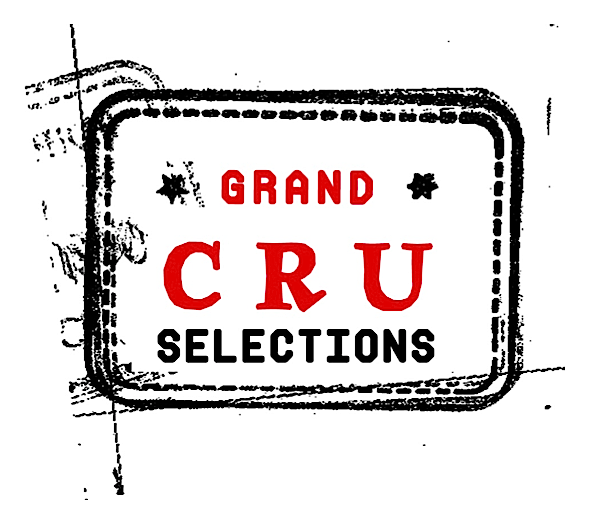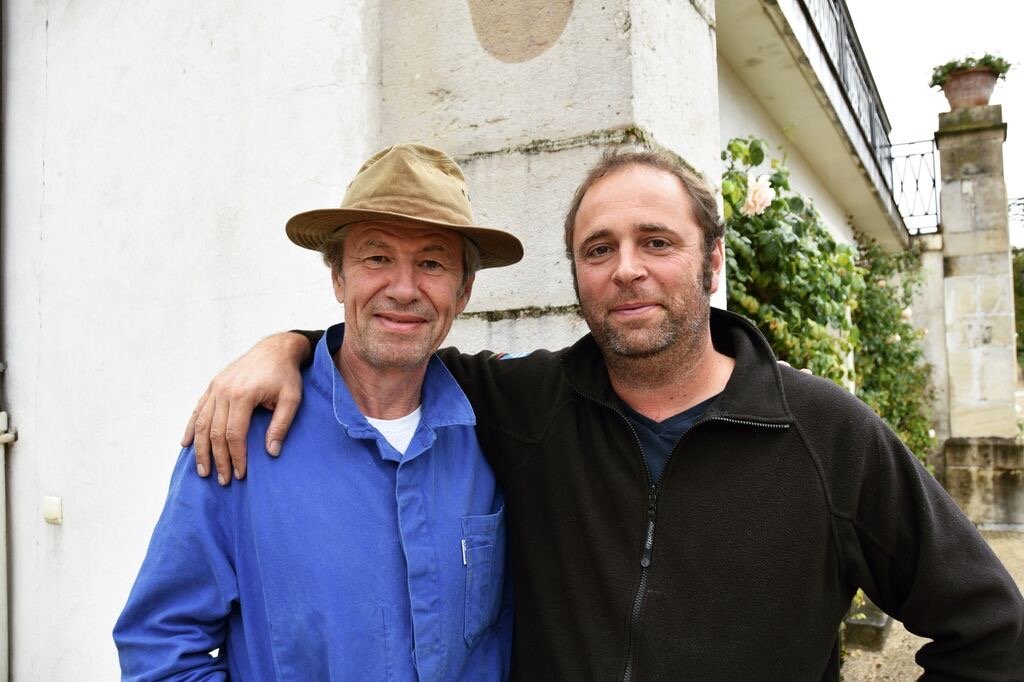domaine du PÉlican
Montigny-lès-Arsures, Jura, France
Guillaume d’Angerville & François Duvivier
Domaine du Pélican began with a bottle of wine.
"I tasted this bottle blind in a restaurant in Paris that I often go to. I always tell the sommelier to give me something blind and the only rule is that it has to be outside Burgundy. When he brought me this wine, I said, 'You forgot the rule, you brought me a wine from Burgundy.' And he said, 'I am afraid you're wrong.’’ - Guillaume d’Angerville
The wine was a bottle of Stéphane Tissot’s Chardonnay Arbois Les Bruyères 2005 and it left such an impression on Guillaume that it inspired him to begin a search for vineyards in the Jura. After leasing Chateau Chavanes in Montigny-les-Arsures, Guillaume gained access to 5 hectares of biodynamically farmed vines that had been impeccably replanted ten years prior by the former owner. The domaine is supported by an additional 5 hectares of vines never touched by chemicals and formerly farmed by Jean-Marc Brignot. In 2014, Jacques Puffeney announced he would be retiring and that Guillaume would be taking over 4 hectares of his vineyards.
Within a short of period of time, Guillaume and his team in the Jura, led by François Duvivier, have adopted a Jurassic sensibility and are poised to do great things.
-
-
The soils in relation to Burgundy and Jura, geologically formed at the same time, they are today divided by an ancient rift valley and following the Sâone river. Thus on the hills tops of Burgundy you find the same limestones that you find in the Jura, and on the foothills marls.
The Jurassic marl is very different from the marl you find in Burgundy. The marl in Burgundy is white marl while in the Jura there is gray and blue marl.
-
Through low-dose treatments carried out according to the lunar calendar, biodynamics strengthens the organic life of the soils and gives the vines energy for better photosynthesis.
The soils are worked with a plow and when a vine is pulled out, the plot is sown with green fertilizers for three years before replanting. The occasional use of organic compost promotes microbial life and the biological balance of the soil.
-
Wines
Cuvée Brut S° (Brut S Zéro) Vin de France
Savagnin is an extraordinary varietal which has the same DNA as the Traminer varietal. Because of its multi-faceted personality, there are many ways to work with Savagnin. In 2018 they were ready to produce a bubbly out of this grape. No sugar, no added yeasts, just the ripe fruit, 90% from vintage 2018 and 10% from vintage 2019 as it began fermenting. Disgorgement took place after 13 months. Brut as in « dry », S for Savagnin, and zero (°) for no dosage…
Savagnin Ouillé
The Savagnin is sourced primarily from two parcels: "Au Barby" and "Grand Curoulet." Both sites are considered some of the best for Savagnin because of their old soils rich in Jurassic marl and "terre de gryphées."Domaine du Pelican's Savagnin is fermented in 500L barrels and ages in neutral 350L barrels for ten months.
Grand Curoulet Savagnin Ouillé
Grand Curoulet is one of the very best terroirs of Arbois. It is a North-facing parcel located on the side of a hill that dominates Arbois and the plaine de la Saône. Grand Curoulet is also believed to be where the first vines of Arbois were planted. Due to its North facing exposition and windy location, Grand Curoulet usually matures later than the other terroirs of Domaine du Pélican. At harvest, the grapes are lightly crushed before being pressed and fermentation is in foudres and barrels. One third of the crop macerates on the skins for one night before being pressed. Aging is in 500L barrels with no new oak.
Savagnin Macération Pelliculaire
As an ode to Savagnin’s many different expressions, starting with the 2018 vintage, Domaine du Pélican has decided to experiment with a skin contact cuvée. The result is a white wine fermented as if it was red, with its skins, and gives the wine additional structure without losing its tension and vibrancy. The maceration of the first vintage, 2018, was for around 10 days, after which the vat's juice is pumped and the skins are pressed. The wine is then taken to barrel. The 2018 vintage (approximately 1,700 bottles) was aged mostly in two Burgundy barrels, with the remainder in stainless steel.
Chardonnay
This cuvée has been made since the beginning of Domaine du Pélican, in 2012. It is sourced from several different parcels of vineyards located in Arbois and Montigny-les- Arsures. The vineyards sit mostly on hill tops, over marly soils. Their altitude is the highest of the estate - close to 400m in elevation. After harvest, the grapes are lightly crushed and then immediately pressed. Fermentation takes place in barrels and foudres. Aging is in 350L and 500L barrels (of which 5% are new ) for about 30% of the crop. The balance is in foudre and vats.
En Barbi Chardonnay
Domaine du Pélican has been farming this En Barbi parcel since 2012 with particular interest. It is a south-facing plot, sheltered from the winds due to its location at the end of an amphitheater of hills around it. Its southerly exposure accounts for its early and complete maturation at harvest. The soil is silty clay over grey marls, resulting in excellent drainage and low risk of hydric stress.
The wine is aged in 350L and 500L barrels (50% of total); 30% in foudre (large oak cask) and 20% in vats. The soil in the parcel of “En Barbi” is Jurassic marl so rich in limestone that it appears white. Francois Duvivier believes that the presence of such a large amount of marl in the soil contributes to wines with more minerality, volume, and length than a “classic” soil of clay and limestone. He describes the balance between the soil type (marl) and the exposure (south) being the main factors behind “En Barbi”'s uniqueness as a plot. The total size of the En Barbi parcel is 1.8 hectare but only 1ha of it is Chardonnay - the rest is Savagnin, Trousseau, and some Poulsard.
Grand Curolet Chardonnay
One third of Domaine du Pélican’s parcel of Grand Curoulet is planted to Chardonnay. The Chardonnay vines are located at the top of the parcel. After harvest, the grapes are lighly crushed before being pressed, and fermentation is in foudres and barrels. Aging is in 500L barrels with no new oak.
Trois Cepages
The Trois Cepages, as the name suggests, is a blend of three grapes. It has been produced since the winery’s inaugural vintage, in 2012. At the time, the decision was made to vinify all of their red grapes together, thereby creating this blend of Pinot Noir (60%), Trousseau (35%) and Poulsard (5%). The vineyards for Trois Cepages are all located in the village of Montigny-les-Arsures. The geology of the soils are composed of predominatly grey and black marls, partially covered with fallen rocks. The vineyards broadly face West, at an altitude between 300 and 400 meters. Elevage is in Burgundy barrels (50%) and foudre.
Béranger Trousseau
Montigny-les-Arsures is the capital of Trousseau, much in the same way Pupillin is the capital of Poulsard. It also happens to be the village where Domaine du Pelican’s winery and this Arbois Béranger parcel are located. This single vineyard Trousseau is made from the parcel that Jacques Puffeney farmed and made his Les Bérangères Trousseau from. Domaine du Pélican’s Trousseau is made with a deep respect for his work and in appreciation of his trust in them working his holdings. 2018 was the first vintage made. The soil in Béranger is alluvial and silt over grey marls, just stony enough to allow for good drainage. This soil composition is particularly beneficial for Trousseau. The vines are over 50 years old and have a south and southwest exposition. The wine is aged in 228L and 350L barrels with no new oak.
Pinot Noir
After much deliberation Domaine du Pélican has decided to produce a 100% Pinot Noir cuvée for the first time from the 2018 vintage. The team resisted until then because they were concerned that they would perhaps not master the vinification of Pinot Noir outside of Burgundy. It is made mostly from their Clos Saint Laurent parcel that is located just behind the winery and sits at an altitude of approximately 350 meters. The soil is made of fallen rocks ("éboulis calcaires") of Bajocian limestone over grey marls (Lias) and the vines are between 10 and 45 years old. The wine is aged in a combination of Burgundy barrels (60%) and in vats 40% without any no new oak.
Poulsard
Poulsard is a tricky grape, according to Guillaume. It goes from being under-ripe to being overripe very quickly. It also has very fragile skin and doesn't always ripen perfectly. The Poulsard parcels are located in Arbois and in Montigny-les-Arsures. Their age varies between 25 and 60 years, and they grow on marly and sometimes sandy limestone soils. First produced in 2015, it is made entirely from the Poulsard vineyards previously owned by Jacques Puffeney. Vinification is similar to that of Pinot Noir or Trousseau. The entire crop is de-stemmed and the juice is treated very gently with pump overs but not punching down. After fermentation, the Poulsard is aged in a large foudre until bottling.

